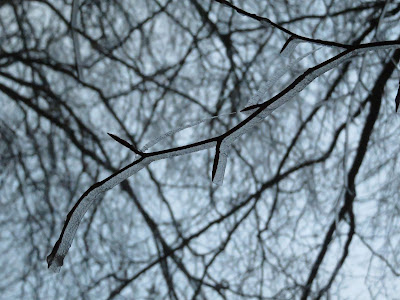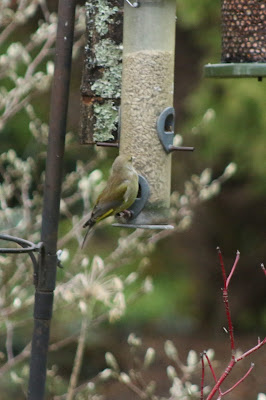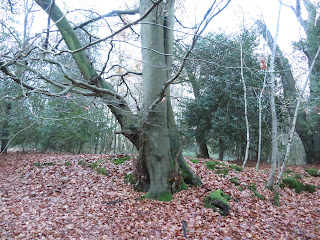It always feels as though not much is happening wildlife-wise in winter but nothing could be further from the truth as many birds are frantically feeding throughout the short hours of daylight.
The heron was fishing in the stream as I arrived (but I was far too slow for a photo), the woodpeckers have spent all day on the feeders, together with large numbers of tits and the robins have been feeding in the freshly dug earth. One robin has been searching between the paving slabs and under the fallen leaves outside our front door. It was a bit of a surprise yesterday when it flew through he open door and checked out the sitting room! We managed to get it out of the back door without too much trauma but it hasn't reappeared at the front of the house yet. Perhaps there is better food out the back.
Goldfinches continue to raid seed heads but we were especially pleased to see this greenfinch in the garden. They used to be so common but rapidly declined following disease about 15 years ago and we hadn't seen one for many years. This is why it is recommended that if you feed the birds, you should clean the feeders regularly.
Tawny owls are still calling loudly in the evenings and the foxes are still visiting collecting the apples.
The deer have also been busy grazing at night (I won't be boring you with the thirty videos of them from last night.)
The skies have been stunning: it really is worth getting outside if you can at some stage when the sun is rising (very late at the moment, about ten to eight) or setting (very early: about five to four.)



















